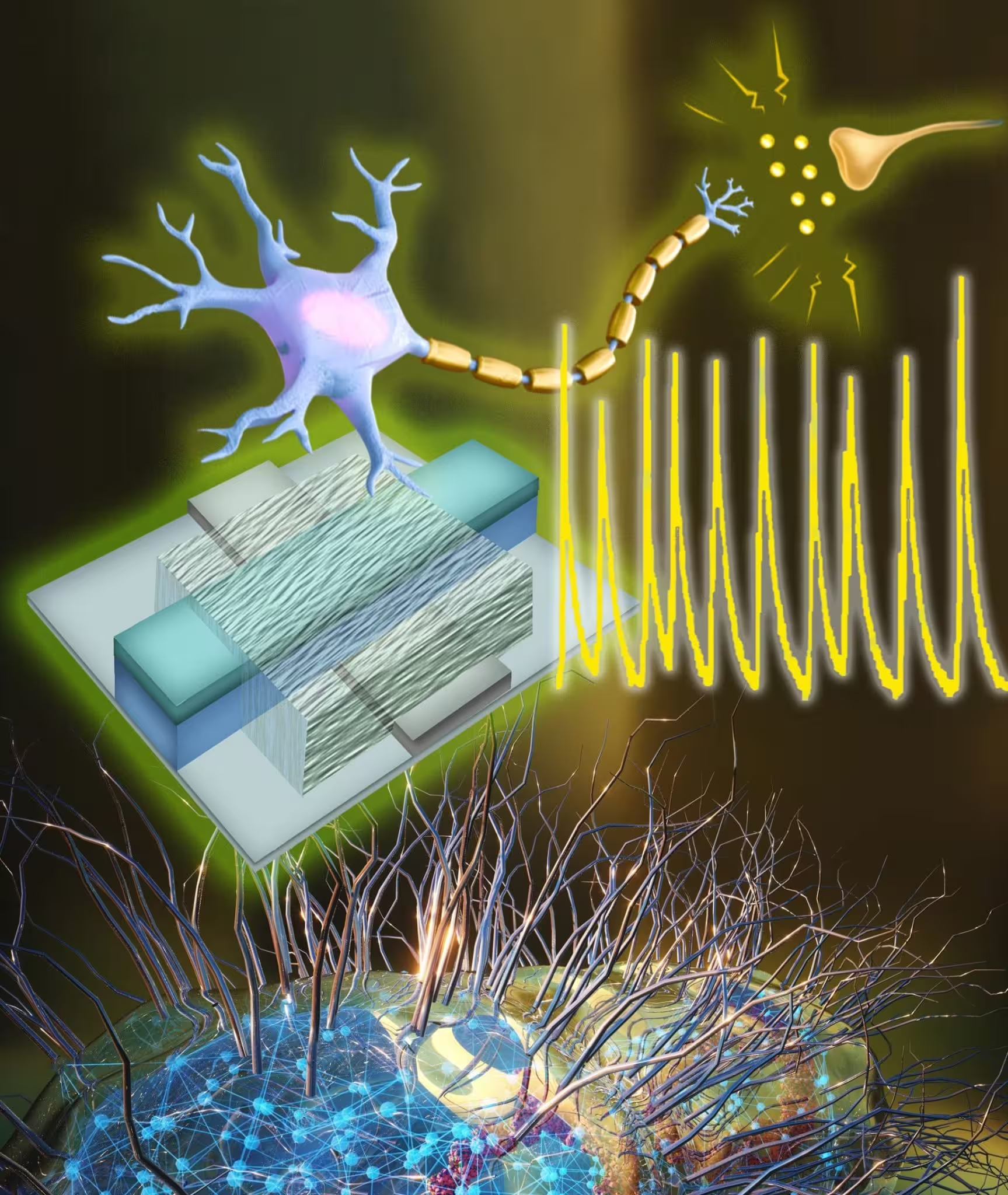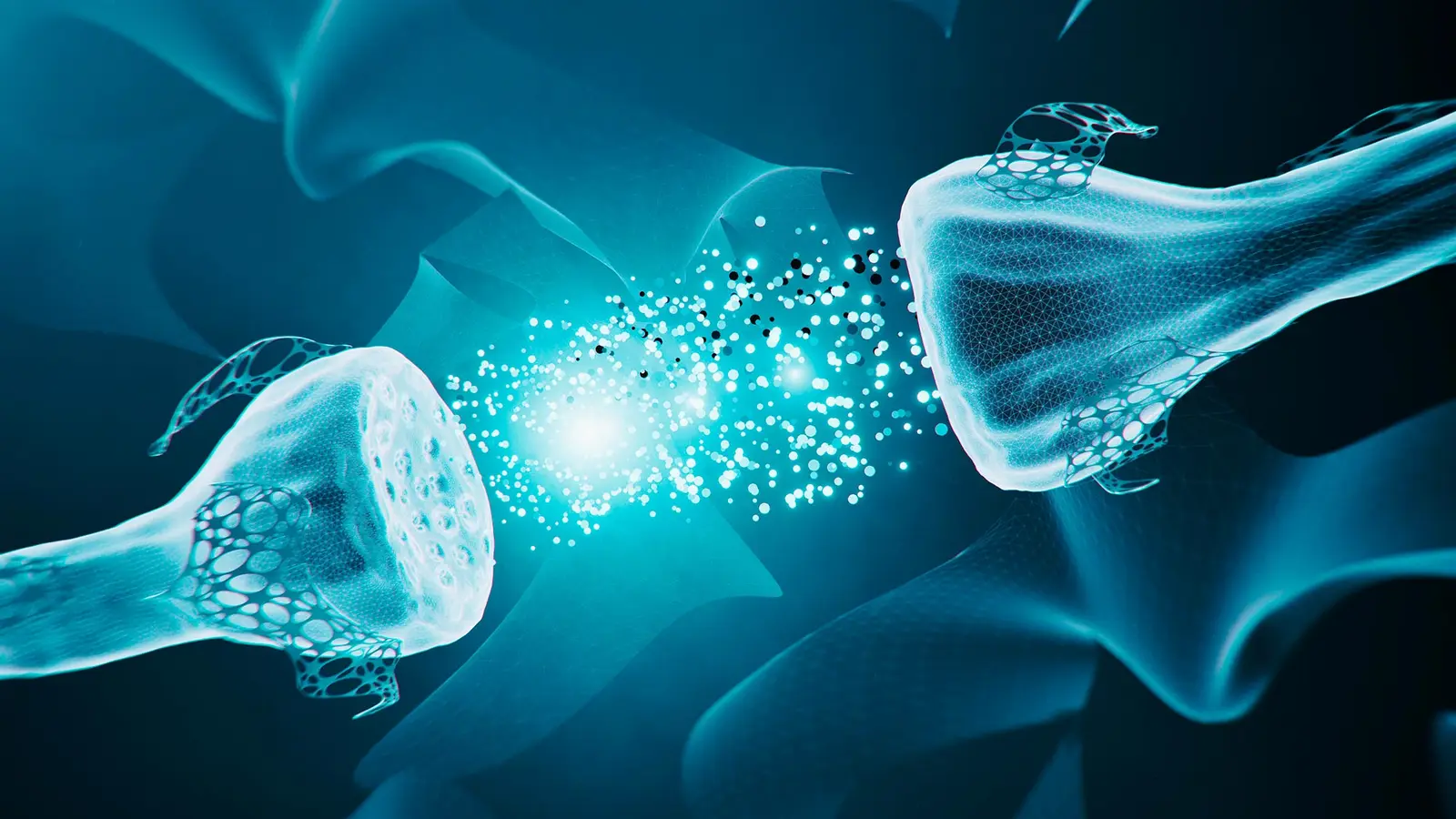5 Minutes
Engineers build an artificial neuron that speaks the brain's electrical language
Researchers at the University of Massachusetts Amherst have created an artificial neuron constructed from protein nanowires that operates at voltages comparable to biological neurons. Built from protein filaments synthesized by the electricity-producing bacterium Geobacter sulfurreducens, the device registers signals at about 0.1 volts—within the same range as human nerve cells. This low-voltage operation opens the door to energy-efficient neuromorphic computing and direct electronic interfaces with living tissue.
Scientific background and technical details
Biological neurons transmit information via small voltage changes across their membranes. Human cognitive tasks run on roughly 20 watts of power, a dramatic contrast with some modern artificial intelligence systems that require orders of magnitude more energy. Engineers have long pursued artificial neurons that emulate biological function to build computers that are both more power-efficient and better suited to interacting with living systems.
Previous artificial neuron implementations typically required higher voltages and thus consumed much more power. According to Jun Yao, associate professor of electrical and computer engineering at UMass Amherst and senior author of the published study, earlier designs used roughly ten times the voltage and up to 100 times the power of the new protein-nanowire neuron. Operating near 0.1 V makes these devices compatible with live neural tissue and reduces circuit complexity by eliminating the need for large amplification stages.
The core material is a protein nanowire derived from Geobacter sulfurreducens, a bacterium known for producing conductive protein filaments. The UMass team has previously applied these biological nanowires to low-power biosensors, sweat-powered biofilms for wearable electronics, and air-harvesting electricity devices. In the current work, the protein nanowires form the active element of a synthetic neuron that can both receive and emit voltage signals in the biological range.

Key discoveries and implications
Lead author Shuai Fu, a graduate student in electrical and computer engineering, emphasized the efficiency gains: "Our brain processes an enormous amount of data, but its power usage is very, very low," he said, contrasting biological processing with the high energy costs of large language models. The new artificial neuron demonstrates that protein-based electronics can achieve comparable voltage amplitudes to living neurons, a critical step toward hybrid bio-electronic systems.
Practical implications include next-generation wearable sensors and implantable devices that communicate directly with the nervous system without bulky amplifiers. Current wearable sensors often detect biological signals that are too weak for standard electronics, requiring amplification that increases energy consumption and device complexity. Devices built with low-voltage artificial neurons could bypass amplification, simplifying designs and extending battery life.
Related technologies and future prospects
The development intersects several active fields: neuromorphic computing (hardware that mimics neural architectures), bioelectronics (devices that interact with biology), and synthetic biology (engineering organisms or biomolecules for new functions). Integrating protein nanowires into circuits could produce bio-inspired computing architectures that are orders of magnitude more efficient for specific tasks like sensory processing and pattern recognition.
Challenges remain. Long-term stability, biocompatibility, and scalable manufacturing of protein-based components will determine whether these artificial neurons can move from laboratory demonstrations to commercial or clinical applications. Researchers must also address how to network large numbers of artificial neurons reliably and how to interface them safely with living tissue.
Future directions and potential applications
Possible near-term applications include low-power biosensors, more efficient neural prosthetics, and adaptive wearables that process signals locally. In the longer term, networks of protein-nanowire neurons could serve as the foundation for neuromorphic processors that perform complex, parallel computations with far smaller energy footprints than conventional silicon-based architectures.
Conclusion
The UMass Amherst team's protein-nanowire artificial neuron represents a meaningful advance toward energy-efficient, bio-compatible electronics that literally "speak" the language of the brain. By matching biological voltage levels, these devices reduce the need for amplification and point toward a future where computing hardware and living tissue can interact more naturally and efficiently.
Source: scitechdaily


Leave a Comment